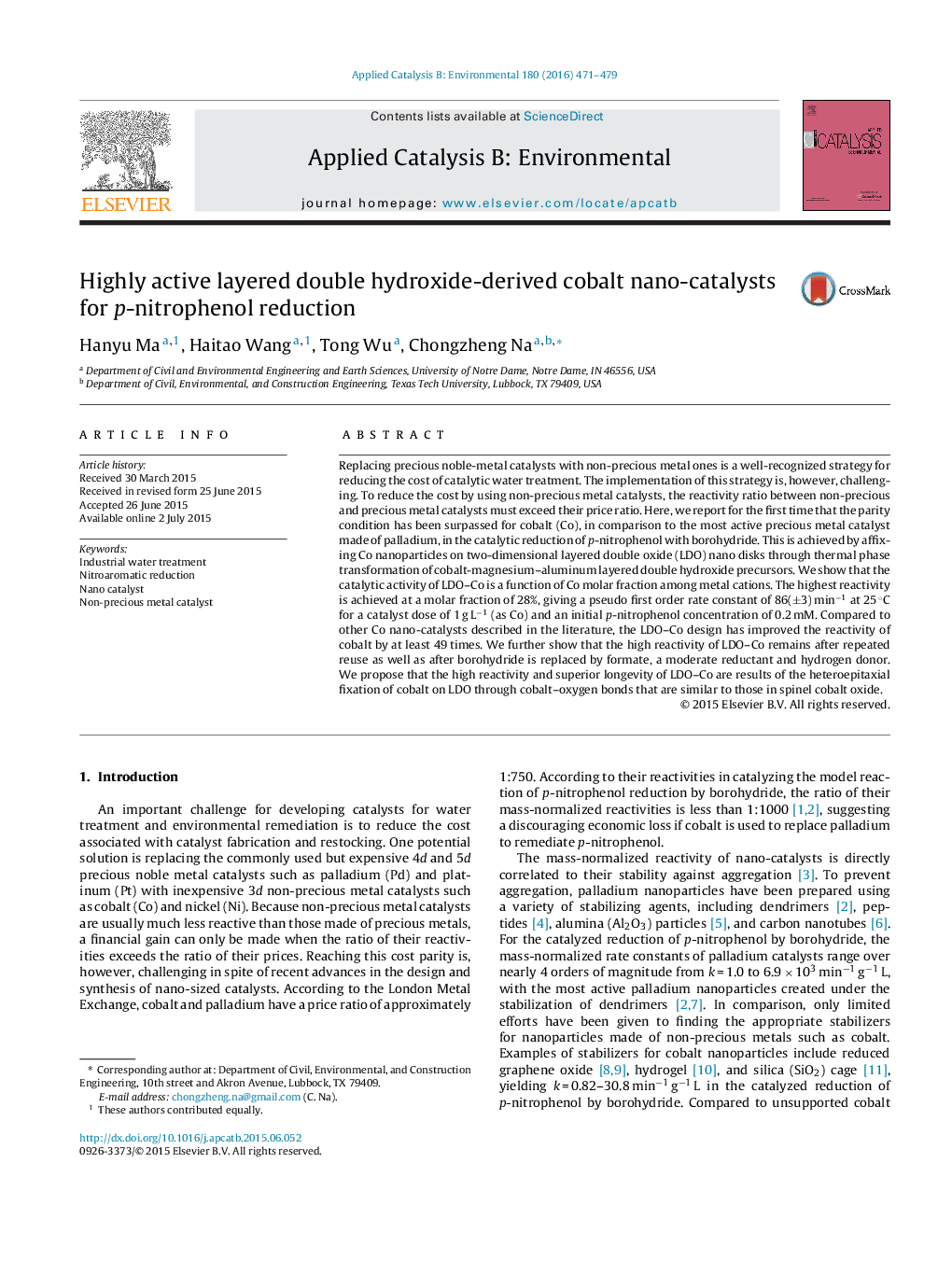| کد مقاله | کد نشریه | سال انتشار | مقاله انگلیسی | نسخه تمام متن |
|---|---|---|---|---|
| 45265 | 46407 | 2016 | 9 صفحه PDF | دانلود رایگان |

• LDO–Co is synthesized by thermal phase transformation from layered double hydroxide.
• Heteroepitaxy fixes Co on LDO through CoO interfacial bonding.
• LDO–Co is highly active in catalyzing p-nitrophenol reduction.
• The reactivity of LDO–Co is at least 49 times that of previous Co catalysts.
• The reactivity ratio of LDO–Co and Pd surpasses the price ratio of Co and Pd.
Replacing precious noble-metal catalysts with non-precious metal ones is a well-recognized strategy for reducing the cost of catalytic water treatment. The implementation of this strategy is, however, challenging. To reduce the cost by using non-precious metal catalysts, the reactivity ratio between non-precious and precious metal catalysts must exceed their price ratio. Here, we report for the first time that the parity condition has been surpassed for cobalt (Co), in comparison to the most active precious metal catalyst made of palladium, in the catalytic reduction of p-nitrophenol with borohydride. This is achieved by affixing Co nanoparticles on two-dimensional layered double oxide (LDO) nano disks through thermal phase transformation of cobalt-magnesium–aluminum layered double hydroxide precursors. We show that the catalytic activity of LDO–Co is a function of Co molar fraction among metal cations. The highest reactivity is achieved at a molar fraction of 28%, giving a pseudo first order rate constant of 86(±3) min−1 at 25 °C for a catalyst dose of 1 g L−1 (as Co) and an initial p-nitrophenol concentration of 0.2 mM. Compared to other Co nano-catalysts described in the literature, the LDO–Co design has improved the reactivity of cobalt by at least 49 times. We further show that the high reactivity of LDO–Co remains after repeated reuse as well as after borohydride is replaced by formate, a moderate reductant and hydrogen donor. We propose that the high reactivity and superior longevity of LDO–Co are results of the heteroepitaxial fixation of cobalt on LDO through cobalt–oxygen bonds that are similar to those in spinel cobalt oxide.
Figure optionsDownload as PowerPoint slide
Journal: Applied Catalysis B: Environmental - Volume 180, January 2016, Pages 471–479